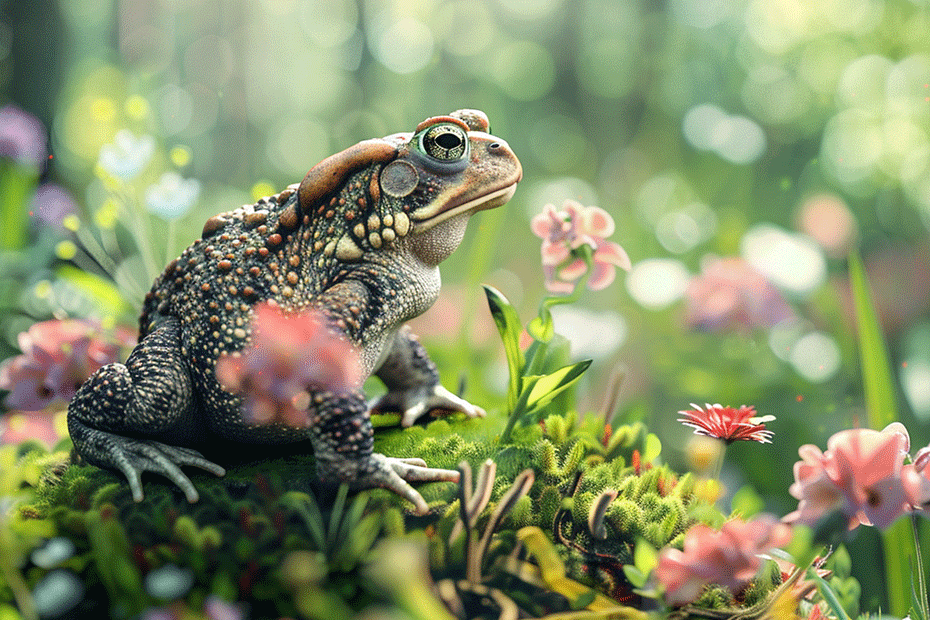Are you dealing with pesky cane toads invading your Florida property? These invasive creatures can wreak havoc on the local ecosystem and pose a threat to pets and wildlife. In this guide, you’ll learn effective strategies to eradicate cane toads from your surroundings safely and efficiently.
From their toxic skin secretions to their rapid reproduction rates, cane toads can be a challenging nuisance to eliminate. But, with the right approach and techniques, you can successfully manage and control their population on your property. Stay tuned as we explore proven methods and tips to help you get rid of cane toads in Florida once and for all.
Whether you’re a concerned homeowner or a wildlife enthusiast, taking action against cane toads is crucial for preserving the natural balance in Florida. By following the advice in this text, you’ll be equipped with the knowledge and tools needed to combat the cane toad invasion effectively.
Key Takeaways
- Cane toads are invasive amphibians in Florida that threaten native wildlife and produce toxic skin secretions.
- Identifying cane toad infestations through physical characteristics, nocturnal activity, and egg masses is crucial for effective management.
- Removal techniques include manual methods like hand capture and netting, as well as chemical control options like citric acid spray.
- Natural predators such as Australian Water Skinks, Meat Ants, and native birds can help reduce cane toad populations.
- Preventing infestations involves habitat modification like reducing standing water sources and monitoring for early detection.
Understanding Cane Toads
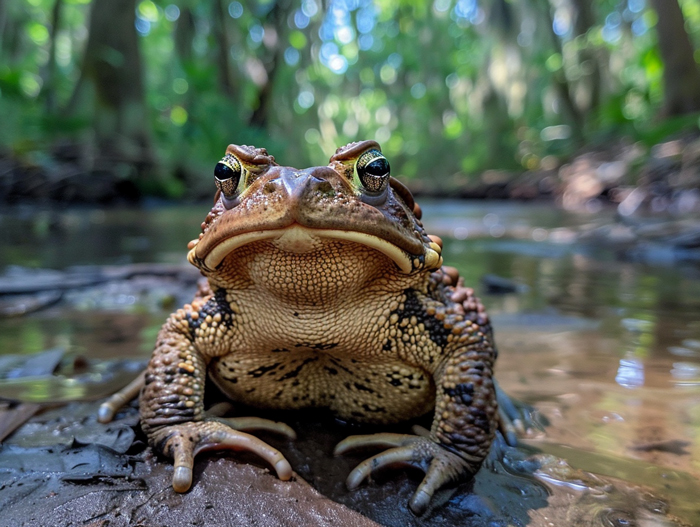
What are Cane Toads?
- Cane toads, also known as Bufo marinus, are large, invasive amphibians native to South and Central America.
- Introduced to Florida in the 1930s to control pests in sugarcane fields, they have since spread rapidly.
- Threaten native wildlife by predating on small animals, insects, and even birds.
- Produce toxic skin secretions harmful to pets and can be fatal if ingested.
- Compete with native species, disrupting the balance of the ecosystem.
Remember, understanding the nature and impact of cane toads is crucial in effectively managing their population in Florida.
Identifying Cane Toad Infestation
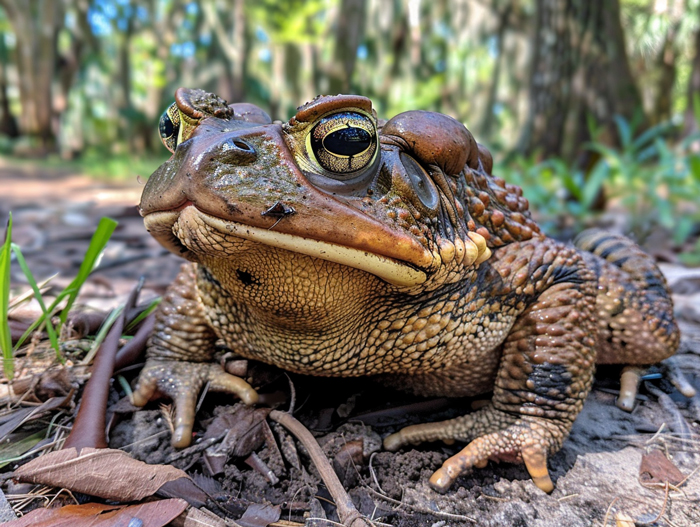
Physical Characteristics of Cane Toads
- Size: Adult cane toads can grow up to 4 to 6 inches in length.
- Color: They have a warty and rough-textured skin that can range from olive-brown to reddish-brown.
- Distinctive Features: Cane toads have large parotoid glands behind their eyes, bony ridges over their eyes, and short legs compared to their body size.
- Nocturnal Activity: Cane toads are primarily active at night, so seeing them during the day could be an indicator.
- Call: Listen for their low-pitched and prolonged trill or chorus-like call.
- Egg Masses: Look for long strings of eggs in ponds or other water bodies, which can be a sign of breeding cane toads in the area.
Methods for Removing Cane Toads
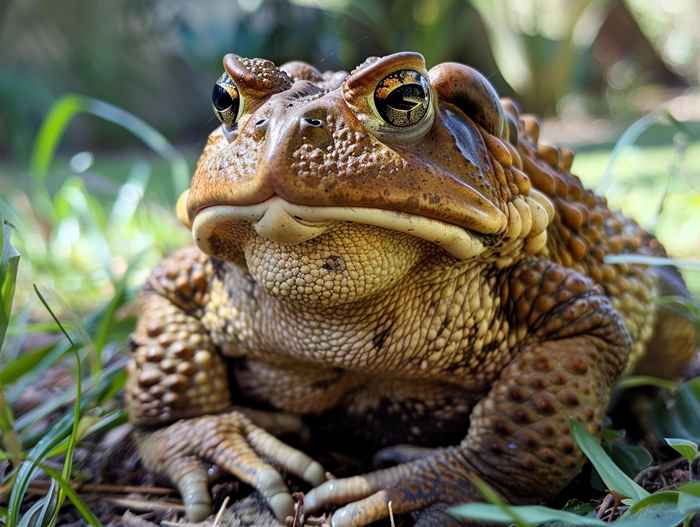
Manual Removal Techniques
- Hand Capture: You can physically pick up cane toads, wearing gloves to protect yourself from their toxin.
- Bag and Dispose: Use a plastic bag to capture them, ensuring secure closure, then dispose of them humanely.
- Netting: Employ nets to catch cane toads, especially near water sources, as they are drawn to moisture.
Chemical Control Options
- Citric Acid Spray: Spraying citric acid on cane toads can be an effective control method.
- Freeze Spray: A quick application of freeze spray can immobilize cane toads for removal.
- Chemical Barriers: Creating barriers with specific chemicals can deter cane toads from entering certain areas.
- Australian Water Skinks: These skinks are known to eat cane toad eggs, helping reduce their population.
- Meat Ants: Meat ants have been observed preying on small cane toads, contributing to natural control.
- Native Birds: Some bird species have been observed consuming juvenile cane toads, aiding in population management.
Preventing Cane Toad Infestation
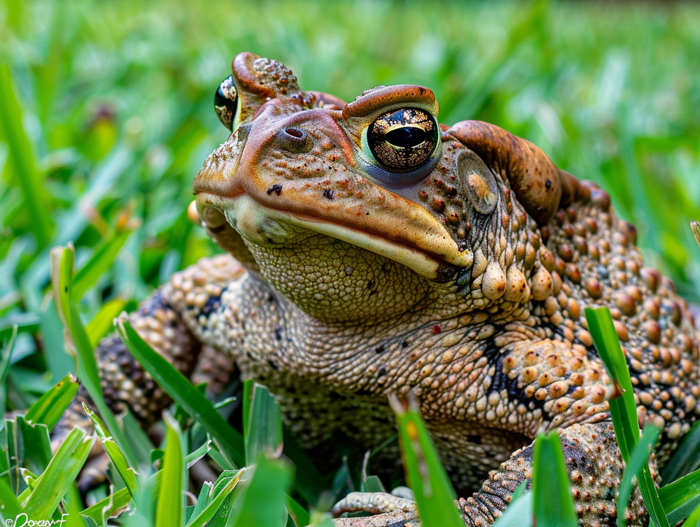
Habitat Modification
When aiming to prevent cane toad infestation, modifying habitats is a crucial strategy. Here’s what you can do:
- Reduce standing water sources: Eliminate areas where cane toads can breed by minimizing water features in your yard.
- Secure trash bins: Keep bins tightly sealed to prevent attracting cane toads searching for food.
- Trim vegetation: Regularly trim plants and bushes to reduce hiding spots for cane toads.
Monitoring and Early Detection
Monitoring and Early Detection are key components in effectively managing cane toad populations. Here’s how you can stay ahead:
- Regular property checks: Conduct routine inspections of your property to spot any signs of cane toads.
- Educate yourself: Learn to identify cane toads and their life stages to intervene early.
- Report sightings: If you spot a cane toad, notify local authorities promptly to prevent further spread.
Remember, taking proactive steps in modifying habitats and staying vigilant through monitoring can greatly assist in preventing cane toad infestations in your area.
Conclusion
You now have a range of strategies at your disposal to combat cane toad invasions in Florida. From manual removal techniques to chemical controls, as well as leveraging natural predators like Australian Water Skinks and Meat Ants, there are various ways to address this issue. Remember, habitat modifications and early detection play key roles in managing cane toad populations effectively. By staying vigilant, conducting regular property checks, and promptly reporting sightings to local authorities, you can help prevent cane toad infestations and safeguard the local environment. Take proactive steps today to protect your surroundings from these invasive species.

Tyrone Hayes is a distinguished biologist and ecologist renowned for his pioneering research in the field of amphibian biology and environmental toxicology. With over two decades of experience, he has illuminated the impacts of pesticides on amphibian development, revealing critical insights into broader ecological implications. Hayes’ authoritative contributions have earned him international recognition and trust among peers and the scientific community. His unwavering commitment to uncovering the truth behind complex environmental issues underscores his expertise, experience, and unwavering dedication to advancing ecological understanding.
